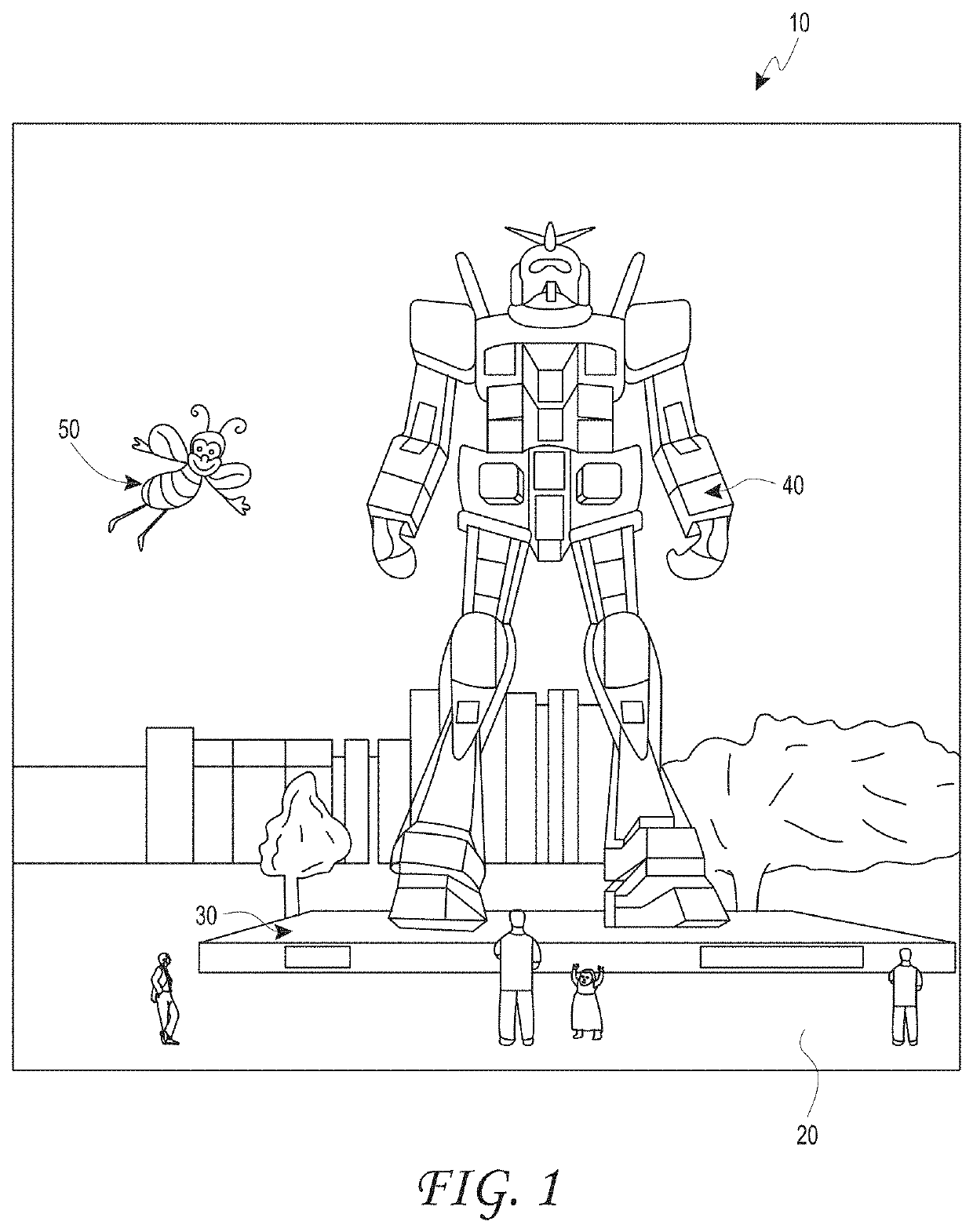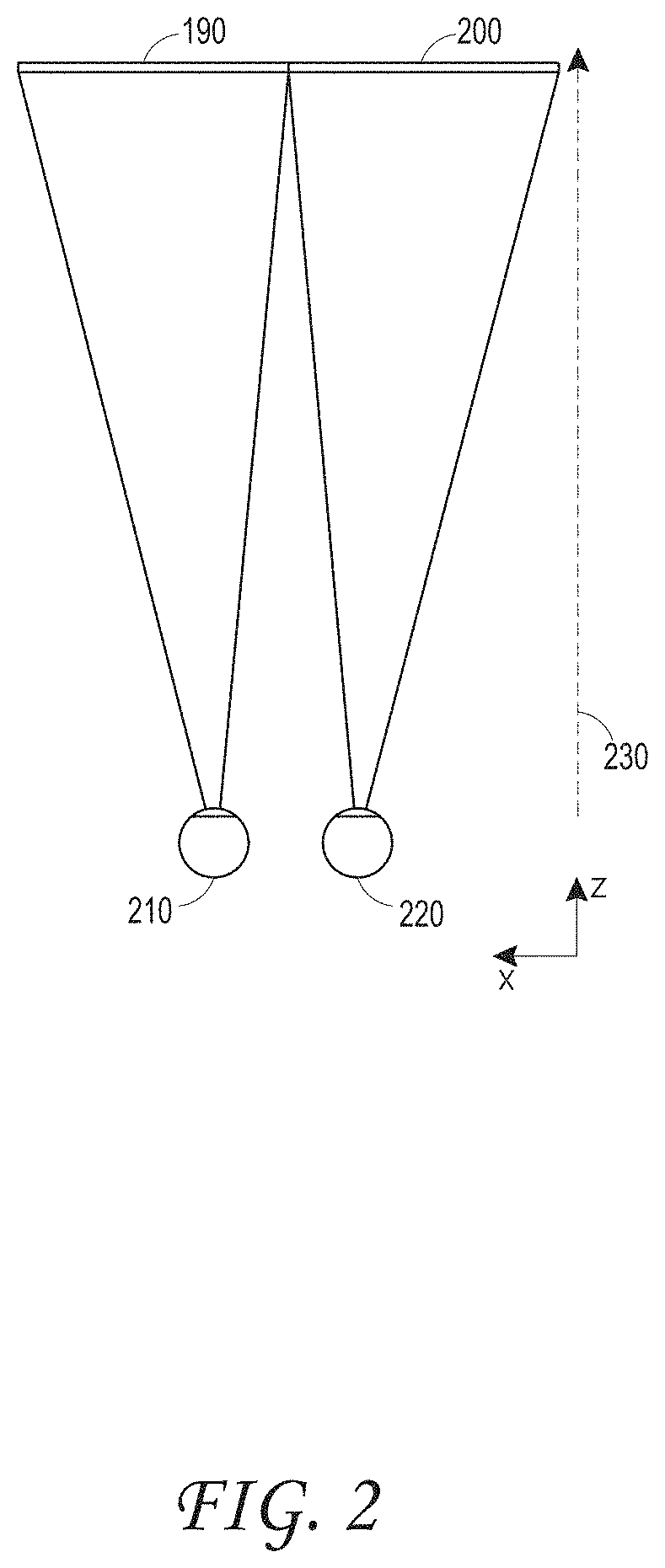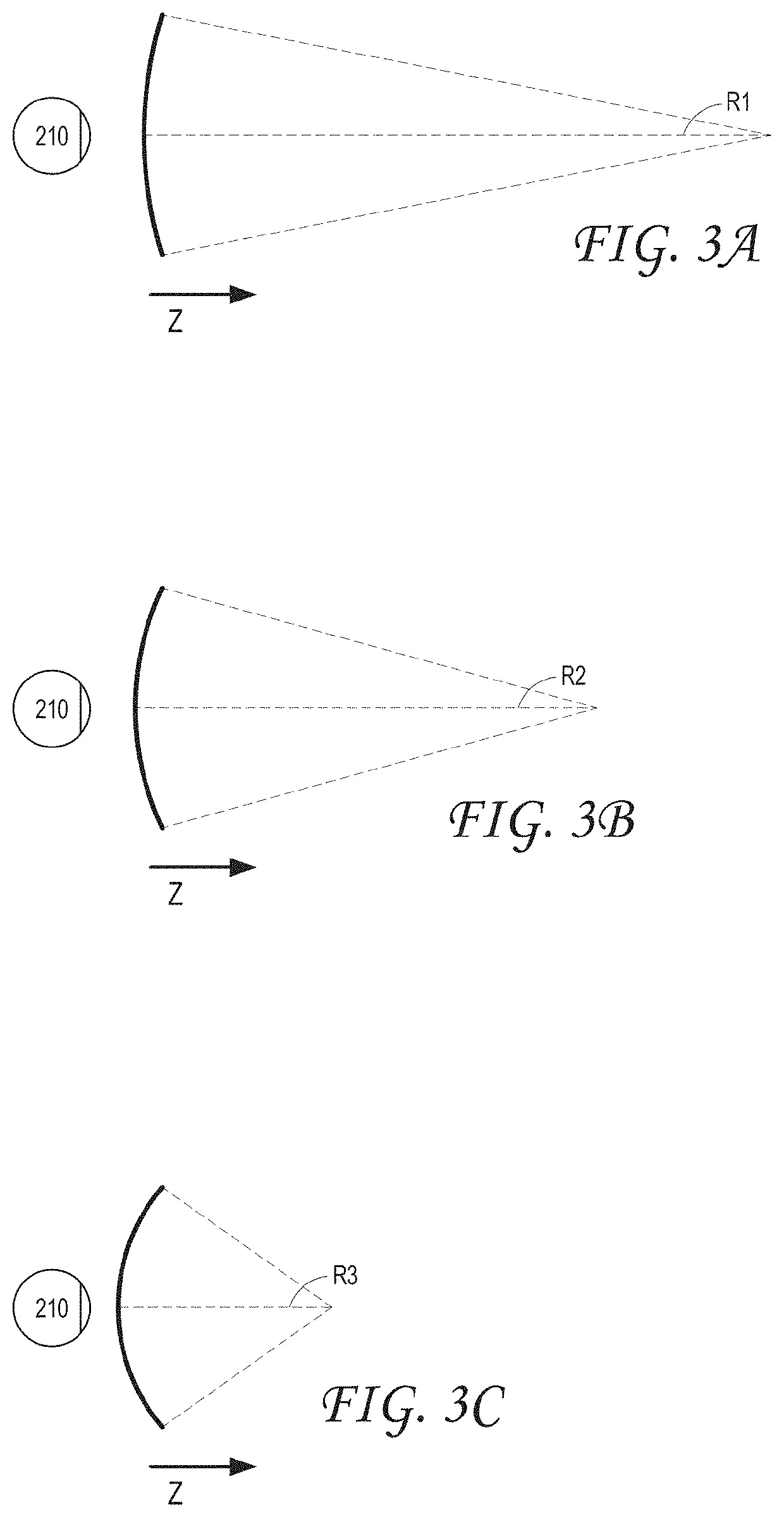Diffractive optical elements with mitigation of rebounce-induced light loss and related systems and methods
a technology of diffractive optical elements and light loss mitigation, applied in the field of display systems, to achieve the effect of reducing the occurrence of reboun
- Summary
- Abstract
- Description
- Claims
- Application Information
AI Technical Summary
Benefits of technology
Problems solved by technology
Method used
Image
Examples
example 1
n of Reflective Layers Formed by Metal Ion Reduction to Silver-Containing Inks
[0218]Example of different methods for forming silver containing layers are shown in FIGS. 21A-C, including a “type 1” high silver compound loading (FIG. 21A), a “type 2” inorganic aqueous silver ion thermal deposition (FIG. 21B), and a “type 3” wet chemical silver ion reduction (Tollens reaction) in accordance with some embodiments herein (FIG. 21C).
[0219]Methods of making reflective layers via silver ion reduction as described herein were compared to other methods of making reflective layers. The comparison was performed on in-coupling grating (ICG) nanopatterned structure. The coating property ratings using the different methods are shown in Table 1. Reflective layers comprising silver, in accordance with some embodiments, were formed using a modified Tollens' reaction. This reaction was done at room temperature, and generated high purity silver with fine smoothness (pinhole free) at nanoscale (FIG. 22C...
example 2
n of Reflective Layers to Vapor Deposition Metal Layers and Silver-Containing Inks
[0221]Plasma pre-treatment of the nanostructured photoresist, yielded excellent adhesion. The reflectivity and ICG diffraction efficiency was tested for a reflective layer comprising silver generated by the modified Tollens' reaction on 385 resist treated with APPJ plasma, and compared to a sputter aluminum deposited-layer on 385 resist, and an inkjetable ink from NovaCentrix that was baked at 180° C. for 15 minutes. The reflective layer comprising silver generated by the modified Tollens' reaction exhibited clearly higher reflectivity that the tested commercial metal inks and also higher than the aluminum coating by vapor deposition (FIG. 23). Moreover, the reflective layer comprising silver generated by the modified Tollens' reaction exhibited the higher reflectivity for all wavelengths tested in the 400-700 nm range (FIG. 23).
[0222]Reflectance and diffraction efficiency are summarized in Tables 2A-B...
example 3
f Surface Treatment
[0226]Effects of surface treatment were evaluated for reflective layers deposited by silver ion reduction as described herein.
[0227]As a control, an imprint area on resist without pretreatment exhibited a very thin Ag coating (only a faint residue after a gentle water wash).
[0228]Resist was washed with acetone at the imprint area. This pretreatment resulted in a thin semitransparent silver coating. While the silver was thicker than the areas with no acetone wash, it was still very thin, and unlikely to have sufficient reflectivity for many applications.
[0229]Resist was pretreated with an ultra thin atmospheric pressure plasma jet (APPJ) coating. The plasma jet coating yielded high reflectivity and acceptable adhesion with a SnCl2 catalyst.
[0230]Resist was pretreated with plasma. This pretreatment yielded high reflectivity and excellent adhesion.
[0231]A glass only area yielded about ˜100 nm silver coating. This coating was highly reflective, exhibiting better refle...
PUM
| Property | Measurement | Unit |
|---|---|---|
| reflectivity | aaaaa | aaaaa |
| distances | aaaaa | aaaaa |
| depth | aaaaa | aaaaa |
Abstract
Description
Claims
Application Information
 Login to View More
Login to View More - R&D
- Intellectual Property
- Life Sciences
- Materials
- Tech Scout
- Unparalleled Data Quality
- Higher Quality Content
- 60% Fewer Hallucinations
Browse by: Latest US Patents, China's latest patents, Technical Efficacy Thesaurus, Application Domain, Technology Topic, Popular Technical Reports.
© 2025 PatSnap. All rights reserved.Legal|Privacy policy|Modern Slavery Act Transparency Statement|Sitemap|About US| Contact US: help@patsnap.com



